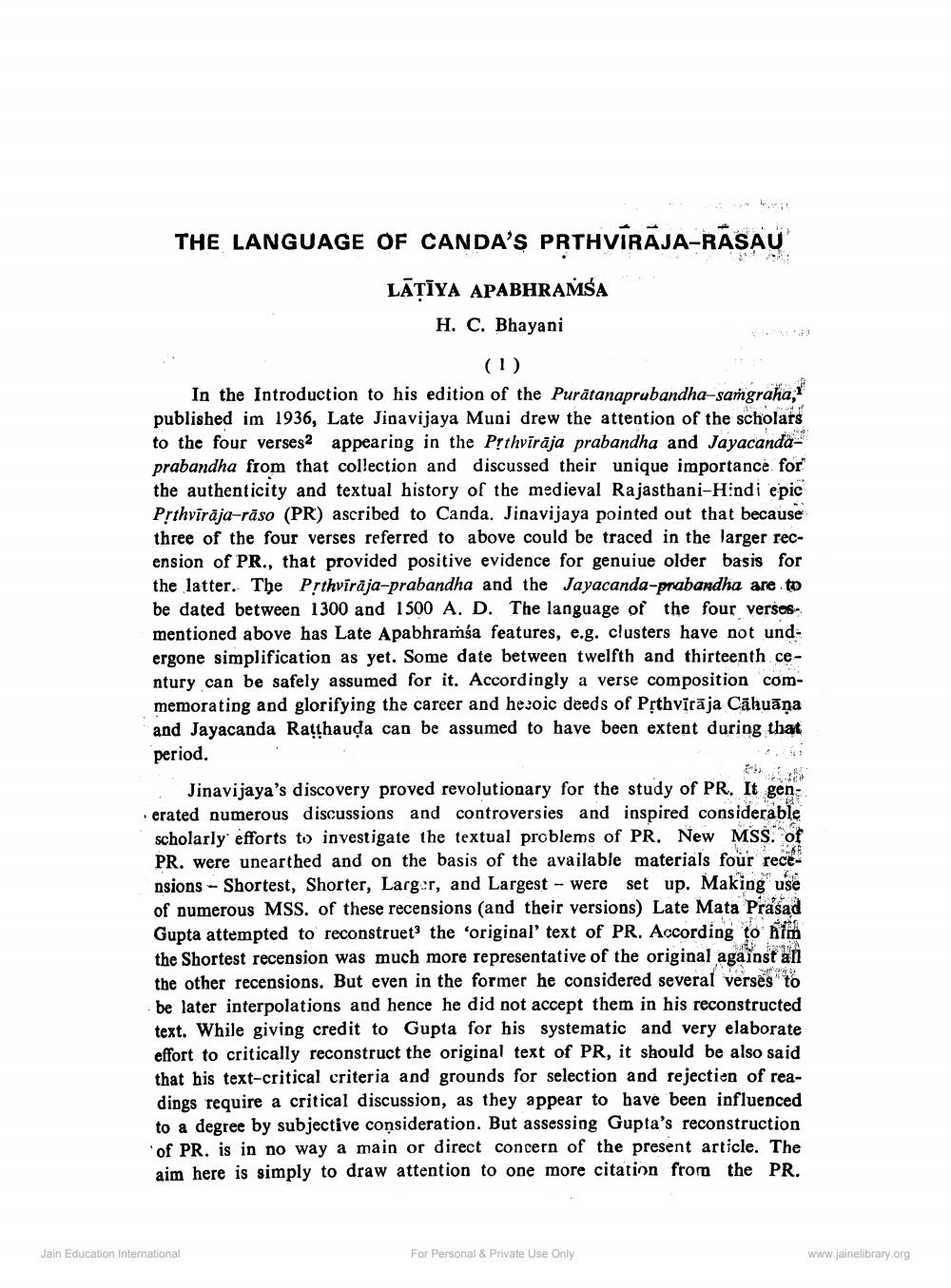________________
THE LANGUAGE OF CANDA'S PRTHVIRAJA-RASAU
LATIYA APABHRAMSA
H. C. Bhayani
(1)
In the Introduction to his edition of the Puratanaprabandha-samgraha, published in 1936, Late Jinavijaya Muni drew the attention of the scholars to the four verses appearing in the Pṛthviraja prabandha and Jayacandaprabandha from that collection and discussed their unique importance for the authenticity and textual history of the medieval Rajasthani-Hindi epic Pṛthviraja-raso (PR) ascribed to Canda. Jinavijaya pointed out that because three of the four verses referred to above could be traced in the larger recension of PR., that provided positive evidence for genuiue older basis for the latter. The Pṛthviraja-prabandha and the Jayacanda-prabandha are to be dated between 1300 and 1500 A. D. The language of the four versesmentioned above has Late Apabhramsa features, e.g. clusters have not undergone simplification as yet. Some date between twelfth and thirteenth century can be safely assumed for it. Accordingly a verse composition commemorating and glorifying the career and heroic deeds of Pṛthvītāja Cāhuāņa and Jayacanda Rathauda can be assumed to have been extent during that period.
Jinavijaya's discovery proved revolutionary for the study of PR, It generated numerous discussions and controversies and inspired considerable scholarly efforts to investigate the textual problems of PR. New MSS. of PR. were unearthed and on the basis of the available materials four rece nsions Shortest, Shorter, Larger, and Largest were set up. Making use of numerous MSS. of these recensions (and their versions) Late Mata Prasad Gupta attempted to reconstruct the 'original' text of PR. According to ffm the Shortest recension was much more representative of the original against all the other recensions. But even in the former he considered several verses to be later interpolations and hence he did not accept them in his reconstructed text. While giving credit to Gupta for his systematic and very elaborate effort to critically reconstruct the original text of PR, it should be also said that his text-critical criteria and grounds for selection and rejection of readings require a critical discussion, as they appear to have been influenced to a degree by subjective consideration. But assessing Gupta's reconstruction of PR. is in no way a main or direct concern of the present article. The aim here is simply to draw attention to one more citation from the PR.
Jain Education International
For Personal & Private Use Only
www.jainelibrary.org




